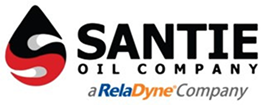Regardless of industry and demand, contaminated lubricants are a great cause of concern for engineers and maintenance personnel everywhere. Lubricants play important roles in equipment protection and overall performance ratings, but when this vital component gets contaminated, various issues may arise. In this article, we discuss the importance of preventing contamination in your equipment’s lubricants to ensure productivity remains unaffected.
The Consequences of Contaminated Lubricants
Contamination can lead to irreversible consequences, including costly machinery and intricate parts damage. This damage is generally premature for the respective equipment, meaning contaminations can essentially burn through equipment much faster than anticipated.
Lubrication plays a vital role in equipment health and performance, and when this process experiences alteration, the equipment must then compensate or overperform. Things like excessive vibration or heat can cause significant malfunction and equipment failure.
Primary Sources of Contamination
Lubrication comes from various sources and is not limited to one specific type. The product is at risk when it touches another object or container. Some of the primary sources of lubricant contamination include:
- Production contamination with overexposure to containers
- Transportation or storage contamination
- Human error leading to application contamination
- Contamination during changeovers from old to new lubricants
Identifying Contaminants
It is relatively simple to identify contaminated lubricants. Most often, equipment will begin showing signs that are audibly or visually noticeable. Issues such as excessive noise, vibrations, and increased heat are all common symptoms of contaminated lubricants.
Another common visual cue is a leaking seal, where the lubricant may struggle to provide adequate closure and ooze from the seal. Sometimes, water is present and may be a contributing factor that leads to foaming near seals, drains, or other openings.
Steps To Prevent Contamination
Preventing contamination of lubricants is an invaluable process for any industry using vital hydraulic greases and oils. Not only can preventative measures extend the lifespan of critical working parts, but they can improve and sustain reliable productivity rates. To help minimize your risk of contamination, there are a few action steps to consider:
- Using proper containers for transfers
- Color coding or adequately labeling containers
- Thoroughly hatching or sealing all ports
- Regular sampling
- Attaching expansion chambers or breathers to gearboxes
- Adequate training for personnel on lubricant handling and storage
Santie Oil Company is an industry-leading supplier of wholesale and bulk lubricants, oils, and greases. When you’re in need of new lubricants or worried about contamination, contact our customer experience team. We guarantee to keep your parts and large equipment in pristine condition with the largest range of clean, industrial lubricants available.

